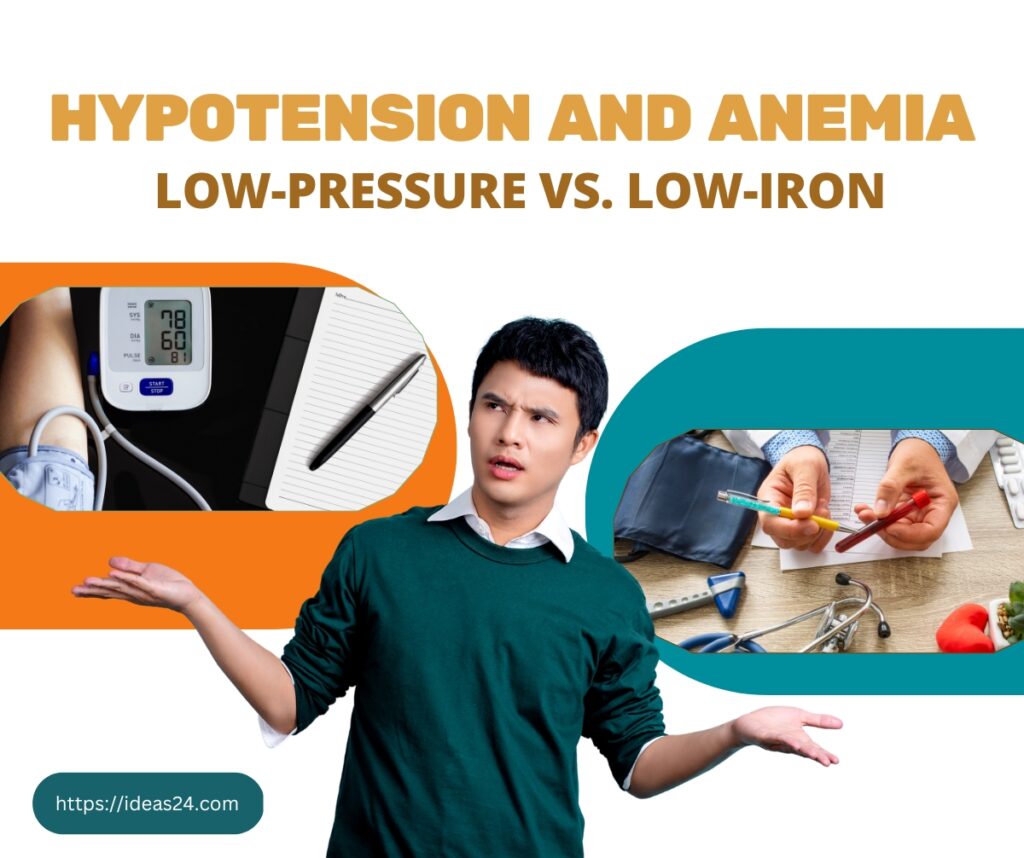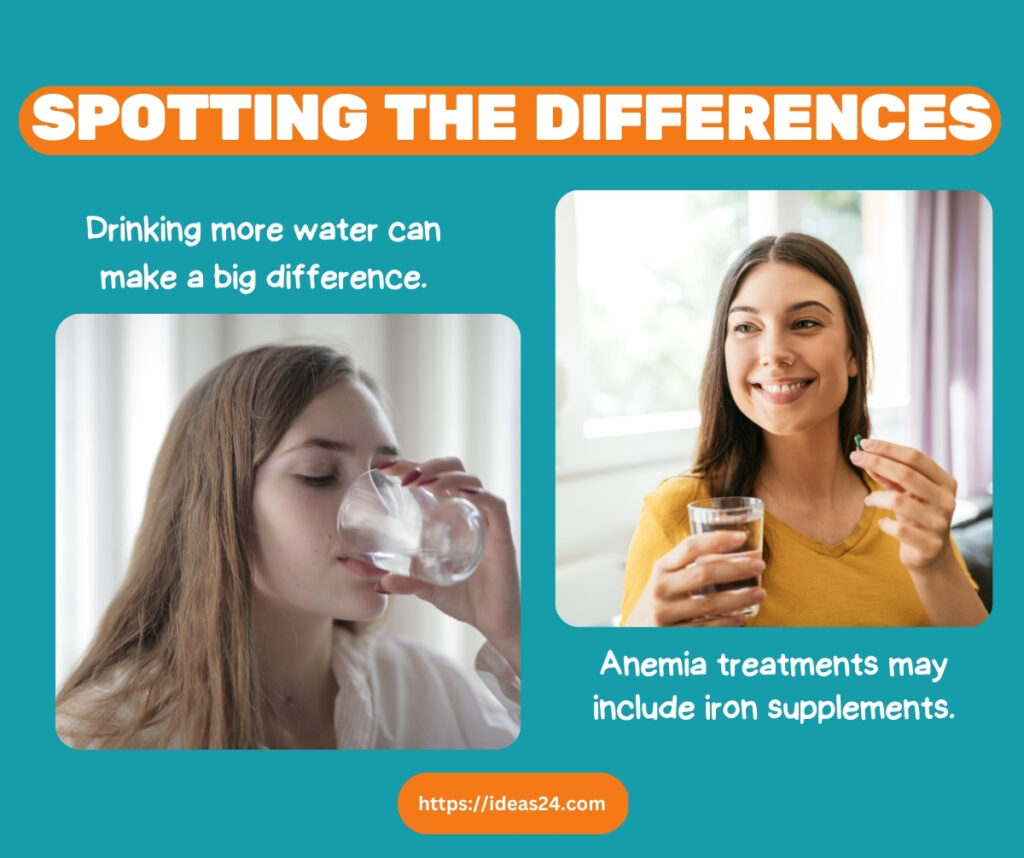
Ever felt like you were on a never-ending merry-go-round of fatigue and dizziness? Well, you’re not alone. Many people experience these symptoms without knowing that they might be related to two common conditions: hypotension and anemia.

But what exactly are they? And more importantly, how do they differ?
Hypotension: A Low-Pressure Situation
First off, let’s dive into the world of hypotension, also known as low blood pressure. Imagine your blood vessels as garden hoses. When the pressure is low, water – or in this case, blood – doesn’t flow as efficiently. This can lead to feelings of light-headedness or even fainting, especially when you stand up too quickly. It’s like trying to water your garden with a trickle; it just doesn’t work as well.
Anemia: When Low Iron Takes a Toll
On the flip side, anemia is all about the lack of healthy red blood cells or hemoglobin in your blood. Think of hemoglobin as your blood’s super transporter, carrying oxygen from your lungs to the rest of your body. When there’s not enough of it, your body parts might feel starved for oxygen, leaving you feeling tired or short of breath. It’s like having a delivery truck but not enough packages to deliver.
Spotting the Differences: Hypotension and Anemia
So, how do you tell these two apart? It boils down to the symptoms. While both conditions can cause fatigue and weakness, anemia often brings additional signs such as pale skin, cold hands and feet, and even unusual cravings for non-nutritive substances like ice or dirt (a condition known as pica).
Navigating the Causes
The reasons behind hypotension and anemia are as varied as the symptoms. Hypotension can stem from simple dehydration to more severe issues like heart problems. Anemia, however, is often caused by iron deficiency, vitamin B12 or folate deficiency, chronic diseases, or genetic disorders.
The Road to Diagnosis
Diagnosing hypotension and anemia involves different tests because they’re like comparing apples to oranges in the world of health.
For hypotension, it’s all about the numbers. A doctor will check your blood pressure using a sphygmomanometer – that’s the arm cuff gadget that gives you a squeeze. If your readings are consistently on the lower side (usually below 90/60 mm Hg), you might get the hypotension tag.
They might also have you do a tilt-table test, where you’re strapped to a table that tilts you upright to see how your blood pressure reacts. It’s like a slow-motion rollercoaster ride, minus the fun.
Anemia‘s detective work starts with a blood test called a complete blood count (CBC). This test looks at levels of different blood components, including red blood cells and hemoglobin. Low counts here can wave the red flag for anemia.
If the CBC points to anemia, further tests can figure out the type – like checking your iron, vitamin B12, and folate levels, or even bone marrow tests if things get really mysterious.
So, while both might make you feel off your game, finding out why is a whole different ballgame for each.
Managing Hypotension and Anemia
Both hypotension and anemia are manageable. For hypotension, simple lifestyle changes like drinking more water, eating small and frequent meals, and wearing compression stockings can make a big difference. Anemia treatment, however, might involve iron supplements, dietary changes, or even medication for more severe cases.
Preventing these conditions starts with a balanced diet and regular check-ups. Foods rich in iron, vitamin B12, and folate are your best allies against anemia while staying hydrated and avoiding excessive alcohol can help keep your blood pressure in check.

Empowering Yourself with Knowledge
Knowledge is power, and understanding the nuances of hypotension and anemia is the first step towards taking control of your health. By recognizing the signs and seeking professional advice, you can navigate these conditions with confidence.
If any of this rings a bell, don’t hesitate to reach out to a healthcare professional. It’s important to listen to your body and take proactive steps towards your well-being. Remember, in the journey of health, you’re the captain of your ship.
While hypotension and anemia might share some common symptoms, they are distinctly different conditions that require unique approaches to management and treatment. By staying informed and proactive, you can navigate these health challenges successfully and lead a vibrant, healthy life.